
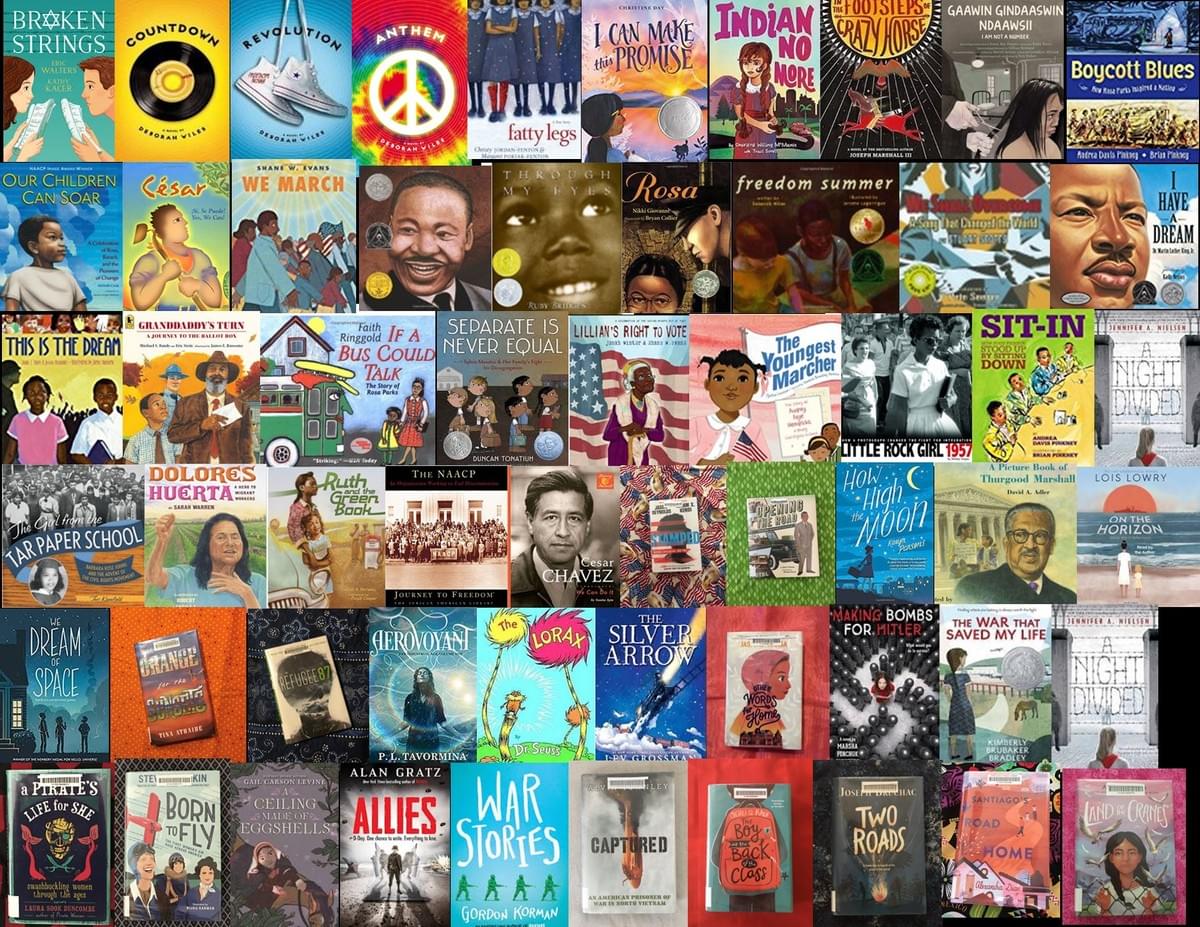
Featured Titles and Teaching Resources Coming in 2022!

Teachers, I know you're busy planning for back-to-school. Here's a few links to resources for books I've taught that will help you hit your 7th / 8th grade Social Studies Common Core standards.
If you're lucky, you'll have a colleague across the hall or in the same pod who teaches English Language Arts, and they'll be willing to coordinate with you and teach at least some of the English Language Arts standards using the recommended fiction books.
If you have any books you'd like to recommend I add, please let me know in the comments.
Here's to having a GREAT school year!
* For novel units and other English Language Arts book related resources, check out my next post, Back-to-School Planning 2: English Language Arts Resources.
* For a year's worth of Independent Reading assignments, check out my post, Back-to-School Planning 3: Independent Reading Assignments By Quarter.
* And finally, end the year right by reading, Ian Doescher's William Shakespeare's Star Wars and using the resources in my post, Back-to-School Planning 4: Fun with Star Wars!
American Revolution
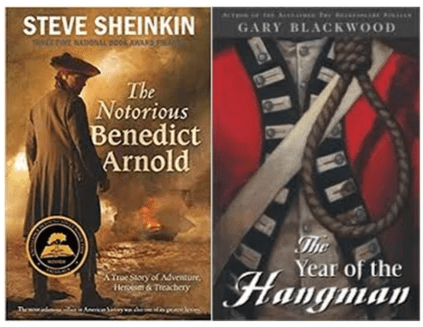
American Revolution Reads. This post suggests pairing Year of the Hangman, by Gary Blackwood, with the non-fiction biography, The Notorious Benedict Arnold, by Steve Sheinkin and offers comprehension questions and ELA standards-based questions for both books.

Revolutionary War Narratives: Seeds of America. This post suggests teaching Cains, Forge, and Ashes, by Laurie Halse Anderson. This post offers links to the excellent, author-provided free teaching resources for these three American Revolution-set historical fiction series. They're great for examining change in POV, black history/ heritage and more!
Recommended Post-Revolution Reads
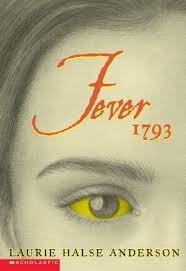
Fever 1793, by Laurie Halse Anderson. This book is about the yellow fever epidemic of Philadelphia a decade after the American Revolution. This post features links to several free teaching resources for this book, including: a publisher's discussion guide, a publisher's literature circle guide, a 45-page teaching guide correlated to 8th grade Common Core Social Studies standards and a separate project assignment and chapter quizzes.
US Constitution / US History
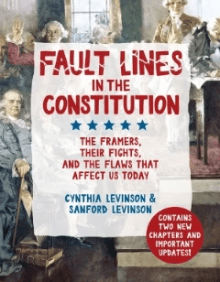
US Constitution Resource: Fault Lines in the Constitution: The Framers, Their Fights, and Their Flaws that Affect Us Today, by Cynthia and Sanford Levinson. Where Fault Lines is strongest is in pointing out how conflicts (both in theory and practice) in the past shape and define our political system and decisions now. It's the answer to the "Why do I have to learn this?" question that inevitably comes up when you're asking an 8th grader to read a document from the 1700s. This post includes a link to a free Educator's Guide, free downloadable and printable stickers, and numerous links to other US Constitution resources.
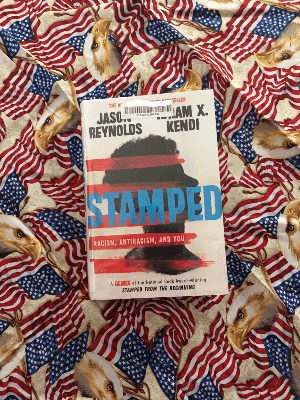
Stamped: Racism, Antiracism and You. By Jason Reynolds and Ibram X. Kendi. The authors are clear, this book is NOT a history book, but...it sure feels like one, and one that scaffolds the text excellently so your students will be better able to identify the bias, or racism, in "no bias" history writing after they've finished reading. It has a FABULOUS free teaching guide, provided by the publisher, as well. This is a must for your classroom, especially if you're looking for texts to help your students identify and analyze racism in history texts.
The Seminole Wars

A Man Called Horse: John Horse and the Black Seminole Underground Railroad, by Glennette Tilley Turner. This non-fiction book starts at the War of 1812 and through the Seminole Wars by chronicling the history of a Black Seminole leader, John Horse, who must navigate American and Creek slavery to lead his people to freedom. There are no free teaching resources offered for this book, however, the time period is so infrequently featured in middle grade literature the book is worth noting and adding to a classroom history shelf. It also tackles some different concepts of slavery, from Seminole to Creek and American.
Civil War
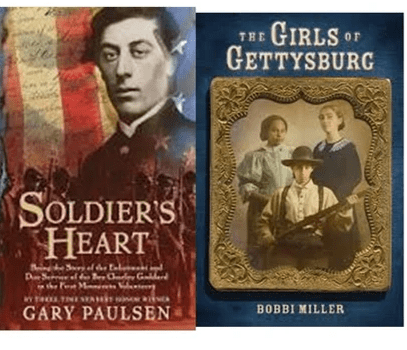
Gendered POV in Literature. This post recommends pairing Soldier's Heart, by Gary Paulsen, with The Girls of Gettysburg, by Bobbi Miller and provides teaching resources for each.
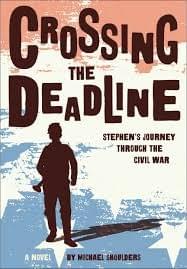
Crossing the Deadline: Teaching Resources. Author Michael Shoulders and his wife offer lesson plans and a guided reading based on the book.
Recommended Civil War Reading
Excellent Historical Fiction! Crossing the Deadline: Stephen's Journey Through the Civil War, by Michael Shoulders
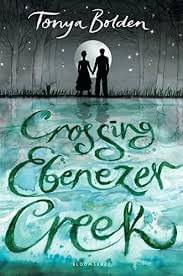
Read Through Your Tears... Crossing Ebenezer Creek, by Tonya Bolden. Set during Sherman's march to Atlanta, this historical fiction book is a powerful account of what happened to the many African Americans at Ebenezer Creek.

Deadly Aim: The Civil War Story of Michigan's Anishinaabe Sharpshooters, by Sally M. Walker. Non-fiction account of the reasons why the men from three tribes -- Odawa, Ojibwe and Potawatomi -- signed up and fought for Company K of the First Michigan Sharpshooters. It was the largest all-Native U.S. Army (Union) company east of the Mississippi, although it had a white commander.
Mexican Revolution of 1913

Caught in the Mexican Revolution: Barefoot Dreams of Petra Luna, by Alda P. Dobbs. This is one of the few historical fiction middle grade accounts I've come across from this time period, so it's worth having on your classroom bookshelf. I couldn't find any free teaching resources for it, but know the author includes a great timeline at the back of the book and an excellent explanation of the events of the Mexican Revolution.
World War I
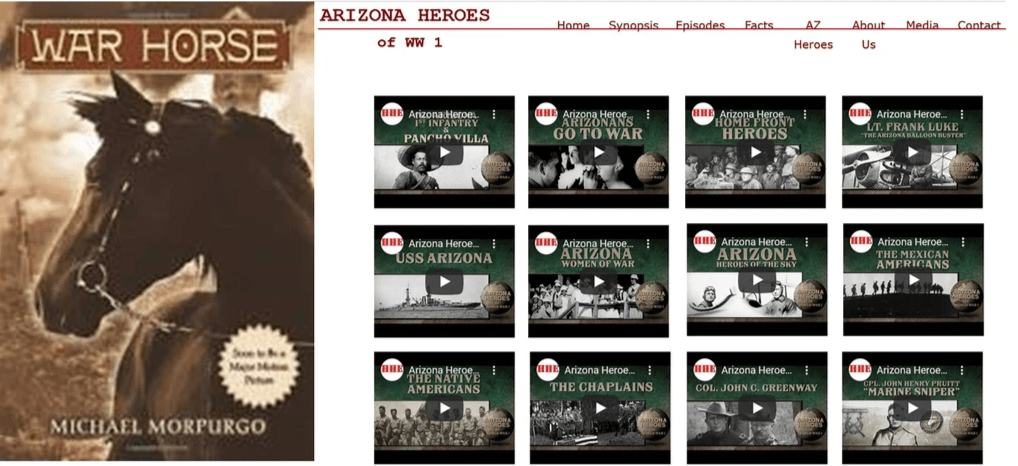
Teaching World War I This post suggests pairing the documentary, Arizona Heroes of WWI, with the book War Horse, by Michael Morpurgo. It includes links to excellent WWI teaching resources offered by Scholastic and War Horse the UK Tour.
Recommended WWI Fiction Books
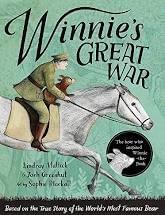
Historical Fiction for Veterans Day. Winnie's Great War, by Lindsay Mattick and Josh Greenhut
The Great Depression
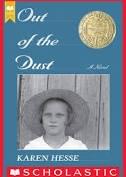
Great Depression: Economics and Literature. This post includes lesson plans for four classroom simulations of key economic concepts: free trade, inflation, how banks grow money, and a bank run. It suggests teaching these to build prior knowledge of economic concepts during the time period before reading Out of the Dust, by Karen Hesse, and includes a link to a Library of Congress reading journal, and watching the Ken Burns documentary, Dust Bowl.
Recommended Great Depression Books

Great Depression in Word and Image. Crash: The Great Depression and the Fall and Rise of America, by Marc Favreau. Non-fiction.

Great Depression Era Historical Fiction. Two Roads, by Joseph Bruchac. This is a fantastic story, masterfully told and set in the Great Depression that captures so many aspects of the era, from hobos and children riding the rails to Indian schools and the Bonus Army's march on Washington, D.C. in 1932. This post provides a link to a free teaching unit, correlated to 6th grade Common Core standards, as well as two other free teaching resources.
The Dust Bowl, by Michelle Jabes Corpora. Review coming in 2022. Lower middle grade, 151 pages, for "slightly more advanced than chapter book" readers, 1st-3rd grade range.
World War II
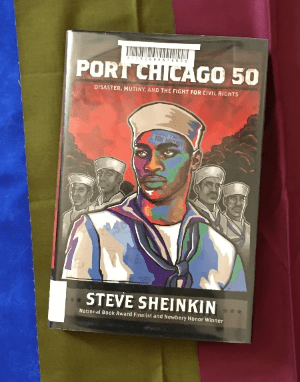
Port Chicago 50: Disaster, Mutiny and the Fight for Civil Rights, by Steve Sheinkin. This non-fiction book details the 1944 explosion that killed 320 Black Navy sailors loading ammunition onto a ship and the racist mutiny trial of the Black sailors who refused to continue loading bombs in the same unsafe manner.
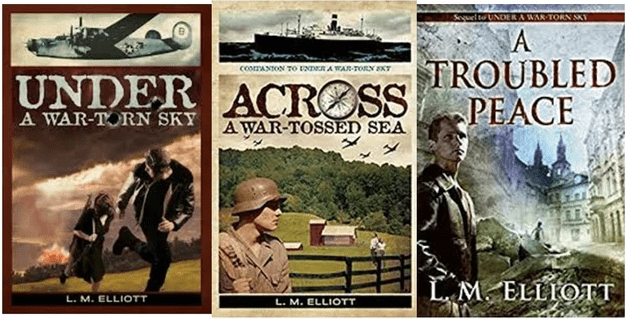
War-Torn Historical Fiction This post links or provides downloadable files to all of L.M. Elliott's teaching materials for her books, Under a War-Torn Sky, Across a War-Tossed Sea, and A Troubled Peace.
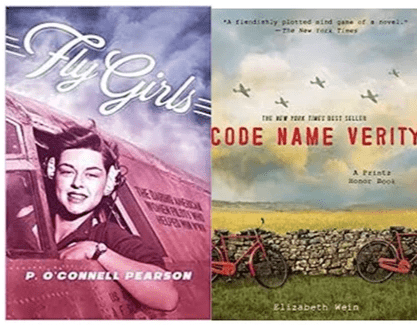
Fly Girls: Injecting Women into WWII Curriculum This blog post suggests you pair the non-fiction Fly Girls: The Daring American Women Pilots Who Helped Win WWII, by P. O'Connell Pearson with the moving, dual-point-of-view fiction account of a woman pilot and a spy in Code Name Verity, by Elizabeth Wein, and gives links to teaching resources for each. Wein's book is appropriate for older and more advanced readers. There are three other suggested readings at the end of this section that would work equally well as substitution reading, if necessary or if your classes' ages and maturity levels are not quite up to Wein's book.
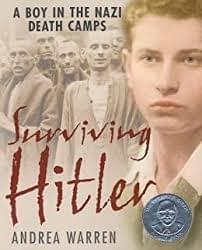
Surviving Hitler This post suggests you use the non-fiction book by Andrea Warren about holocaust concentration camp survivor Jack Mandelbaum and provides a downloadable Student Journal with comprehension and reflection questions (I have the answer key, and if you write me directly I'll send it along) and the author's truly excellent Teaching Guide.
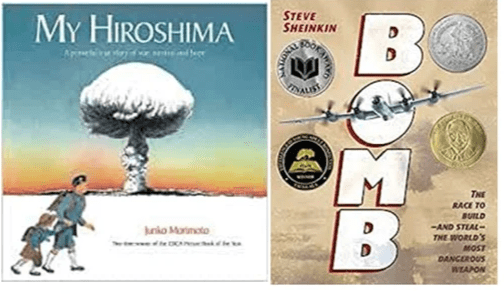
Teaching Empathy vs. Sympathy This post suggests you pair Junko Morimoto's excellent picture book, My Hiroshima, with Steve Sheinkin's The Bomb, and provides teaching resources, including a link to a video interview and reading of Morimoto's book, a free lesson plan comparing both perspectives (Japan and US), and a discussion guide for Bomb!
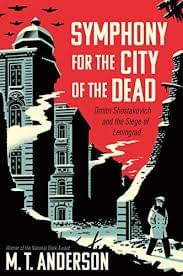
We've Played Shostakovich This post suggests you use Symphony for the City of the Dead, by M.T. Anderson, to introduce your upper level history students to how Stalin defeated Hitler, who tried to starve the more than 2 million people of St. Petersburg during WWII. This is appropriate for older or advanced reading students.
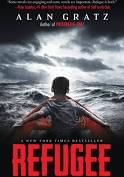
Excellent for CCS 8th grade Of the three points of view (POV) used in Refugee, by Alan Gratz, one is a German Jewish child in WWII. Three compare and contrast graphic organizers are provided for easy comparison of the fictional narratives, each from the POV of a child (Cuba and Syria are the other two countries represented).
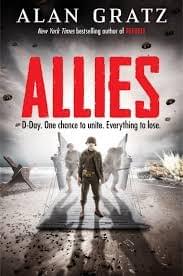
D-Day 77th Anniversary. Allies, by Alan Gratz. This year, 2021, is the 77th anniversary of D-Day, June 6, 1944, and this historical fiction book is perfect for reading with your 7th/8th grade Social Studies classes. The book follows the story of several D-Day participants from their POVs, from a German enlisted in the US forces, to a Black medic, a girl trying to reach the French Resistance and more.

Faith-Based WWII Teaching Resource This post suggests using John Hendrix's graphic novel, The Faithful Spy: Dietrich Bonhoeffer and the Plot to Kill Hitler, to teach Common Core and faith objectives in 8th grade. It includes a link to the free Teaching Guide and the author's website and detailed account of how he researched the book and drew the true story.

Paired Texts: WWII and the Cold War Espionage This posts suggests pairing the historical fiction book, How I Became a Spy, with one of two possible non-fiction texts: The Lady is a Spy, about American Virginia Hall who worked for the French Resistance in WWII, or one of 10 articles about different spies in Spies: The Secret Showdown Between America and Russia. It includes classroom activities using different ciphers, including the Atbash cipher and frequency ciphers.
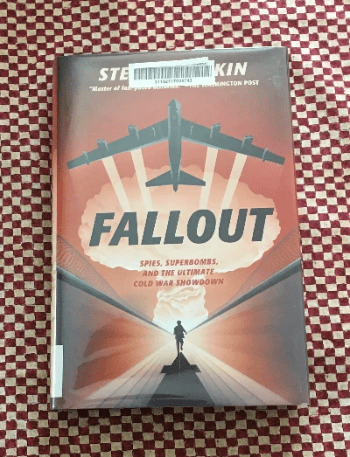
Cold War Spies Non-Fiction: Fallout: Spies, Superbombs and the Ultimate Cold War Showdown, by Steve Sheinkin. This post includes a link to the FREE discussion guide for this non-fiction book provided by the publisher.
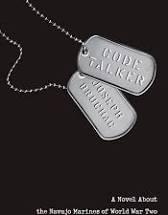
WWII: Code Talkers Unit. Code Talker, by Joseph Bruchac, Montana ELA Teaching Unit and IKE Education's Spy Kids: Code Talkers Lesson Plan. This non-fiction unit offers two FREE awesome teaching units for Bruchac's book and contextualizing the Navajo Code talkers' pivotal role in WWII.

Sioux Code Talkers of WWII, by Andrea M. Page. This post includes a quick summary of the book and a description of the lesson plan, "An Author Plays with Words," included/printed in the back of the book, as well as a link to the author's website for additional teaching resources.
Recommended WWII Fiction Books

Best Friends and Spies. Skylark and Wallcreeper, by Anne O'Brien Carelli
Diverse Family Drama. The Length of a String, by Elissa Brent Weissman
Historical Fiction for Veterans Day. Genevieve's War, by Patricia Reilly Giff
Heroines in Historical Fiction. Island War, by Patricia Reilly Giff. A WWII tale of a little-known Japanese invasion of an island off of Alaska, and two children's survival -- alone -- on the island.
WWII Story Told in Verse. Under the Broken Sky, by Mariko Nagai. It's a free verse tale told from the POV of a Japanese girl whose world falls apart when the Japanese flee the U.S.S.R.'s invasion of China, and she's left to fend for herself and her little brother.

Making Bombs for Hitler, by Marsha Forchuk Skrypuch. This books follows a 9-year-old Ukranian girl in a Nazi concentration camp and ultimately in a weapons making factory in the final days of the Nazi regime. It has plenty of resources for sale on Teachers-pay-Teachers and has been out while, so there's lots of proven teaching materials for this book. The author offers 11 discussion questions free on her website.
The War that Saved My Life, by Kimberly Brubaker Bradley. This book chronicle one girl's story of escaping an abusive mother during the German Luftwaffe bombing of London. The post includes links to three teaching resources, including a publisher's guide, a set of chapter-by-chapter questions and additional resources about England's evacuation of children during WWII.
A Night Divided, by Jennifer A. Nielsen. This is a Cold War resource, as the story takes place post-WWII and illustrates the devastating effects of the Berlin Wall on the German citizens through the story of one girl whose family is divided and her struggle to reunite. The post includes links to the author's resources for teaching this book, a publisher's educational guide and additional resources about the Berlin Wall.

Games of Deception: The True Story of the First U.S. Olympic Basketball Team at the 1936 Olympics in Hitler's Germany, by Andrew Maraniss. Non-fiction, high-interest read. Highly recommended.
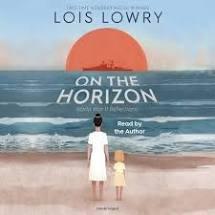
History in Verse: WWII and Pearl Harbor. This post suggests using On the Horizon, by Lois Lowry, as an introduction / anticipatory set to the attack on Pearl Harbor during WWII. I often used picture books this way in 7th/8th grade Social Studies, as they generally reach all your readers by that age, and students can quickly build background knowledge about historic events. While this book offers a child's (Lois Lowry's) take on this historic World War II event, it is full of personal histories of the lives lost and the everyday events forever interrupted on Dec. 7, 1941.
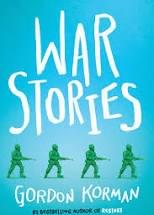
WWII and War-Based Video Games. War Stories, by Gordon Korman. This post reviews this tale, told in dual-POVs, of a 12-year-old boy learning his grandfather's WWII experience on Omaha Beach was very different from the WWII-based video games he plays.
Attacked at Sea: A True World War II Story of a Family's Fight for Survival (True Rescue Series), by Michael Tougias and Alison O'Leary. A rare, non-fiction account of submarine warfare in the Gulf of Mexico during WWII. Highly recommended!
Non-fiction Sci-Fi: Spooked!: How a Radio Broadcast and The War of the Worlds Sparked the 1938 Invasion of America, by Gail Jarrow. This is a wonderful account of how The War of the Worlds was made into a radio play and includes teaching resources (including a pdf of the radio script) and historical context (start of WWII). This is an excellent resource for both Social Studies and English Language Arts teachers.
A Different WWII Spy Story: Faceless, by Kathryn Lasky. This is a fantasy featuring a family of spies whose faces are almost instantly forgotten by the general public, and how their youngest daughter is integrated into the Third Reich and sent to spy on Hitler for an assasination attempt.
A Whale of a Tale: A Whale in Paris, by Daniel Presley and Claire Polders. This is a fantasy tale about a girl who discovers a whale in the Seine River during Nazi occupation of Paris in WWII.
The Cold War

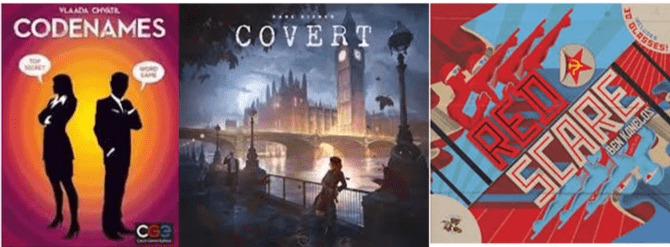
Introducing the Cold War Arms Race This post links includes teaching ideas for using Dr. Seuss's The Butter Battle Book to introduce the arms race escalation and links you to Ike Education's Cold War Kids: Space Race lesson plan.
Teaching the Cold War 1 This recommends your English Language Arts students read The Enemy: Detroit, 1954, by Sara Holbrook, provides a link to a starter lesson for the book, a downloadable Red Dot Simulation lesson plan and materials, and recommends the vocabulary-building game, Codenames.
Teaching the Cold War 2 This post recommends you use Suspect Red, by L.M. Elliott, in your Social Studies classroom for it's rich collection of photographs. It has a publisher-provided Educator's Guide, with the link to download, and I provide a downloadable Air Raid Simulation lesson plan and materials. The role-playing game, Covert, is recommended for its spy-building network and European geography, but only if your students have considerable time to play (say, end of the year?).
Teaching the Cold War 3 This post recommends Spy Runner, by Eugene Yelchin. There is a link to a TpT pay-for set of comprehension questions for the book, and I offer a free Readers Theater lesson plan with 6 Cold War scenarios for a Social Studies classroom. The role playing game, Red Scare, is recommended as an end-of-year game. The film, Bridge of Spies, is also recommended to end this unit, with a free set of comprehension questions for students as they watch.
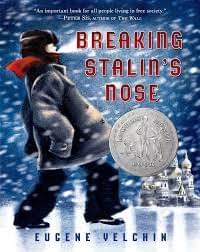
Excellent Historical Fiction! This post recommends Breaking Stalin's Nose, by Eugene Yelchin. The author offers an excellent Educator's Guide on his website, along with several primary sources to help students with the setting and context of Stalinist USSR.
Recommended Reading
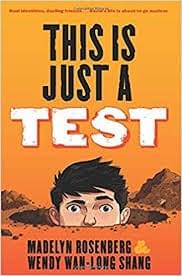
Boys Digging Holes. This is Just a Test, by Madelyn Rosenberg & Wendy Wan-Long Shang. Set in the 1980s, in the backdrop of the soon-to-fall Berlin Wall and Ronald Reagan, this book captures the milieu of the last days of the Cold War through the eyes of a 13-year-old boy. He and a friend dig a fallout shelter -- with almost fatal consequences. It also features a seriously funny set of grandmas!

Docu-Novels for Social Studies and ELA Reads. This post recommends the first of Deborah Wiles' The Sixties Trilogy books for classroom use and gives links to supporting teaching materials. Countdown is set during the Cuban Missile Crisis of 1962; Revolution during the Freedom Summer of 1964 in Mississippi; and Anthem in 1969 and tackles the Vietnam war draft and protests.
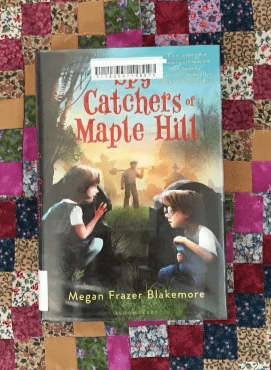
McCarthy Era Fiction: Spy Catchers of Maple Hill, by Megan Frazer Blakemore. This is an excellent read for lower middle grade / elementary students set during the McCarthy hysteria of rooting out spies in Vermont.
Civil Rights

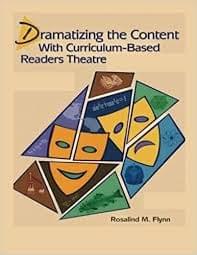
Civil Rights, Picture Books & Readers Theater. This post suggests using Dramatizing the Content with Curriculum Based Readers Theater, or CBRT, by Rosalind Flynn and picture books to encourage students to research and discover Civil Rights leaders and events. Students write and perform their own readers theater scripts in class. It uses the picture book, Freedom on the Menu, and its readers theater script (link and PPT backdrops provided) to establish student expectations. Includes the following downloadable materials: list of suggested picture books, the project assignment, sign up sheet, checklist, script grading and performance rubrics, suggested web sites for research and tips for writing a script.
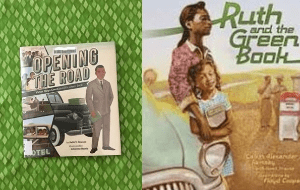
Picture Books and the Green Book: Planning a Trip Across Jim Crow USA Lesson Plan. This post suggests using the picture books, Opening the Road and Ruth and the Green Book, as an anticipatory set to introduce a lesson on planning a trip across Jim Crow USA. It is adapted from two lesson plans offered by CarolinaK12.org and offers an editable lesson plan (Word doc), 36 states and their Jim Crow laws, links to blank state maps, a Power Point presentation and Guided Notetaker, and the link to the New York Public Library Collection's digital versions of The Green Book.

Books Full of Stars. This post suggests teaching two historical fiction books by Linda Williams Jackson, Midnight Without a Moon and A Sky Full of Stars. Set in 1955, right before and after the Emmett Till murder, Rose Lee Carter must first decide if she'll remain in Jim Crow Era Mississippi with her extended family or flee to Chicago. Then after she makes her decision, she explores what it means to be brave after the sham-trial. (See writing assignments for following post.)
Moving Historical Fiction This post suggests teaching Ghost Boys, by Jewel Parker Rhodes. Set in modern day, the parallels to the shooting of Tamir Rice in Cleveland, Ohio are explicit, although the story is historical fiction and features the ghost of Emmett Till. There is a link to an excellent teaching guide, developed by the author and Boogie Down Books.
Mississippi Trial, 1955 For English teachers, this post suggests teaching Chris Crowe's book, Mississippi Trial, 1955, to demonstrate white privilege and compare / contrast the choices between his main character, Hiram Hillburn, and the main character in Linda Williams Jackson's book, A Sky Full of Stars. Two expository writing prompts are provided, one compare / contrast, the other argumentative. For Social Studies teachers, this post offers a link to CarolinaK-12.org's lesson plan, Plessy v. Ferguson and the Roots of Segregation. It offers an introductory lesson plan for the unit asking students to research Jim Crow laws in states and then plan a trip, also using The Green Book, on the New York Public Library.
Civil Rights and Desegregation in our Schools. This posts suggests teaching The Long Ride, by Marina Budhos, and offers a link to several excellent teaching ideas for this book. It recommends using the " UN-equal Simulation" in the "School Segregation" lesson plan, provided by CarolinaK12.org, and provides the editable Power Point slides and a Guided Note Taker for this lesson.
Brown Girl Dreaming. This post examines the autobiography of Jacqueline Woodson's childhood, growing up in the Deep South of the 60s and experiencing Jim Crow laws and prejudices. She also has a learning disability, which goes undiagnosed for many years, but still finds encouragement to develop her writing. There is a free, publisher-provided educator's guide. This non-fiction book, written in free verse, can be used to address ELA non-fiction Common Core standards, as well as ELA poetry standards in 7th grade.
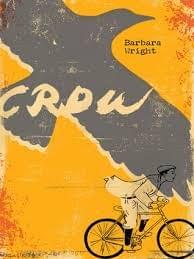
The Wilmington Race Riots. This post suggests teaching the historical fiction book Crow, by Barbara Wright, based on historical accounts of the Wilmington Race Riots of 1898. It pairs several FREE, excellent teaching resources with a Carolina K-12 lesson plan specifically for the book.
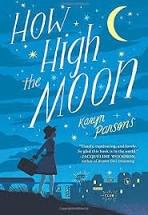
George Stinney Jr. Story. This post suggests using How High the Moon, by Karyn Parsons, a historical fictionalization about the unjust arrest of 14-year-old George Stinney Jr. in 1944 South Carolina. The book is told through three points of view (POVS) of three 11- and 12-year-old Black children, but not Stinney. The post includes a non-fiction article detailing Stinney's exoneration 70 years after his sham conviction and execution.

WWII: Code Talkers Unit. Code Talker, by Joseph Bruchac, Montana ELA Teaching Unit and IKE Education's Spy Kids: Code Talkers Lesson Plan. This non-fiction unit offers two FREE, downloadable awesome teaching units for Bruchac's book and contextualizes the Navajo Code talkers' pivotal role in WWII.
1950s Civil Rights: Native Nation Terminations: Indian No More, by Charlene Willing McManis with Traci Sorell This short but impactful historical fiction book illustrates one girl's struggle to live with her family in Los Angeles when the US government terminates her tribe, the Umpqua, in 1954. The publisher provides an absolutely stellar, 20-page teaching guide, and this post provides a link to further teaching standards from a School Library Journal blog.
I Am Not a Number / Gaawin Gindaaswin Ndaawsii, by Jenny Kay Dupuis and Kathy Kacer This is a moving text about the Canadian policy of taking First Nations, Metis and Inuit children from their homes to live in "residential" schools to be "saved" from their tribes' cultures. A short, personalized non-fiction account like I Am Not a Number makes an excellent hook to a lesson about residential schools and policies.
Fatty Legs: The True Story, by Christy Jordan-Fenton & Margaret Pokiak-Fenton. This is a story about a young girl plucked from her home on Banks Island, in northern Canada, to attend a school in Aklavik (on the mainland) run by Belgian nuns, who stripped her of her language and culture. There are links to five excellent and free teaching guides for this book.
Cross Country Historical Journey. In the Footsteps of Crazyhorse, by Joseph Marshall III. This is a great multi-generational story, featuring a half-Lakota boy's grandfather taking him on a cross-country trip to visit the places pivotal in the life of Tasunke Witko, also known as Crazy Horse. There is a link to a teacher's excellent, chapter-by-chapter comprehension question guide, as well.
Recommended Native Heritage Reading
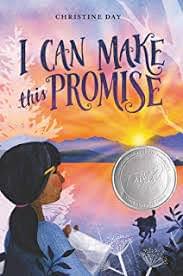
Ramifications of Forced Adoptions. I Can Make This Promise, by Christine Day. The ramifications of Edie's mother's forced adoption ripples through Edie's life, like waves steadily pounding a beach, and finally leads to her confronting her mother about the "other Edith" in their lives -- and a shocking, heart-breaking revelation.
Vietnam War
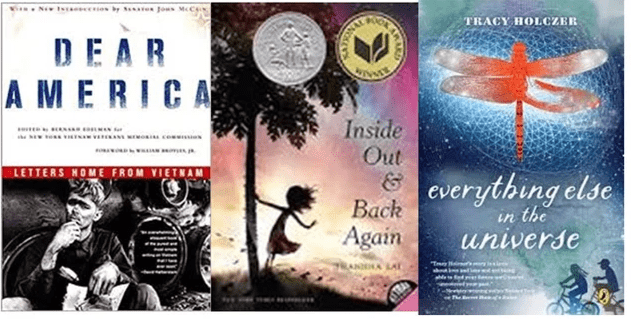
Paired Texts: Vietnam War. This post recommends pairing non-fiction Dear America: Letters Home from Vietnam, edited by Bernard Edelman, with the fiction books, Inside Out and Back Again, by Thanhha Lai or Everything Else in the Universe, by Tracy Holczer. It includes a Vietnam War research project assignment, grading rubric, websites for research and more.
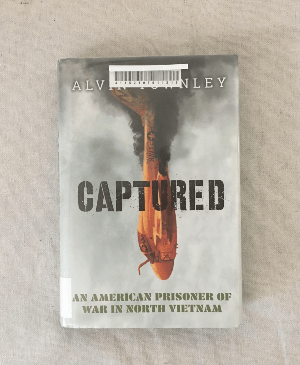
Captured: An American Prisoner of War North Vietnam, by Alvin Townley. This post includes the educator's guide to teaching this non-fiction account of naval aviator Jeremiah Denton's 7-year incarceration as a POW in North Vietnam. It also includes a link to the hour-long PBS documentary of Denton's experiences.

Patriotic American and the Vietnam War: Most Dangerous: Daniel Ellsberg and the Secret History of the Vietnam War, by Steve Sheinkin. Includes a review of this excellent, YA / high school-level non-fiction account of the Pentagon Papers and how they came to be released to the media. Post includes an excellent teaching guide.
Recommended Vietnam Fiction Books
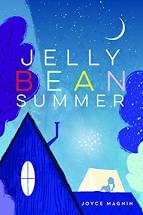
Vietnam Era Summer. Jelly Bean Summer, by Joyce Magnin
Immigration / Refugee Crisis
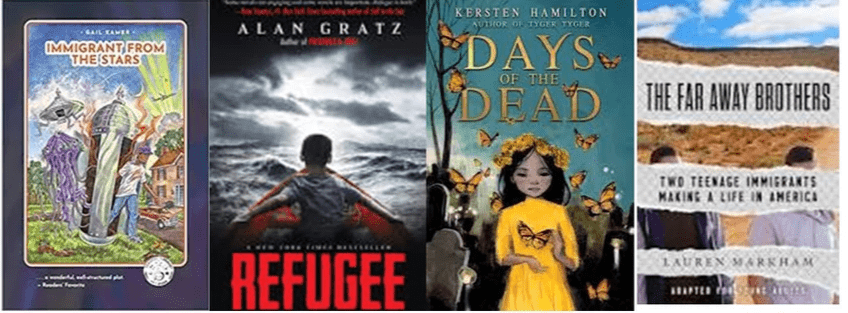
Sci-Fi / Alien Immigration Allegory This post includes a review of Immigrant from the Stars and the link to the free Power Point teaching guide on Teachers Pay Teachers by the author, Gail Kamer.
Immigration: Days of the Dead. This post includes a review and link to the free teaching guide to the book by Kersten Hamilton.
Excellent for CCS 8th Grade. Refugee, by Alan Gratz. This post includes three compare / contrast graphic organizers to easily allow students to compare the three narrative points of view included in the book: one from Nazi WWIIl, one a refugee coming by boat to Miami from Cuba, and the other a boy fleeing violence in Syria. There is also a link to the publisher's lesson plan.
Immigration: Powerful Non-Fiction This post recommends The Far Away Brothers: Two Teenage Immigrants Making a Life in America, by Lauren Markham, for slightly older audiences, 9th grade, and offers links to both a 9th grade and 11th/12th grade teaching guides provided by the publisher.
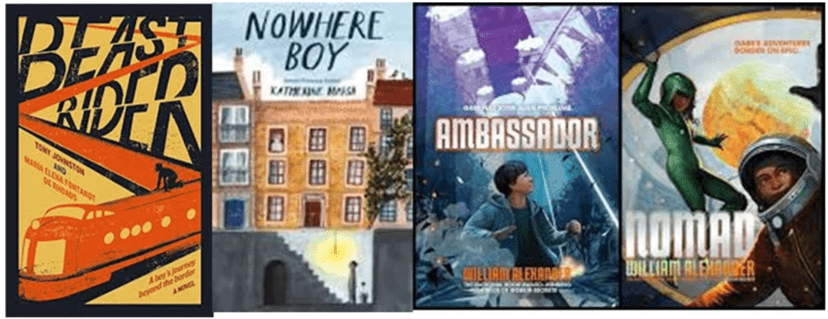
Immigration: Beast of a Ride Beast Rider: A boy's journey beyond the border, by Tony Johnston and Maria Elena Fontanot de Rhoads. A boy rides this killer train through Mexico to the promise of a better life in the United States.
Touching Refugee Story Nowhere Boy, by Katherine Marsh. A touching cross-Europe train caper for a boy trying to help a refugee find his father.
Summer Reads: Sci-Fi with a Hispanic Ambassador. Ambassador and Nomad, by William Alexander. A Latinx boy braves detention in ICE on the US border and more to reunite his family -- and the universe -- against an alien threat.
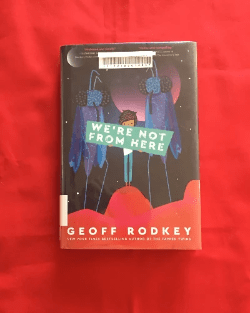
Summer Reading: Sci-Fi Refugees. We're Not From Here, Geoff Rodkey. A sci-fi look at what if we were immigrants who weren't wanted -- on another planet.

African Historical Fiction Reads. This post reviews Orange for the Sunsets, by Tina Athaide, which examines Idi Amin's expulsion of 80,000 Indians from Uganda, and Refugee 87, by Ele Fountain, which examines the journey of an African boy from an unnamed country across the Mediterranean to Europe.

Syrian Civil War Refugee Story. This post recommends teaching the middle grade novel in verse, Other Words for Home, by Jasmine Warga. Twelve-year-old Jude flees the Syrian Civil War with her mother to the United States, but in the process she must leave behind her father, Babba, who still tends the family store, and older brother, Issa.
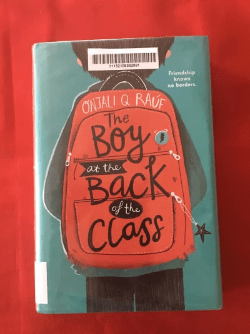
Back-to-School: The Boy at the Back of the Class, by Onjali Q. Raúf. This book features several excellent, free teaching resources, all of which are linked in this post or are available for free download. It focuses on the Syrian refugee crisis in England, and the main characters are younger, age 9, so it's probably more of a lower elementary read than middle school.
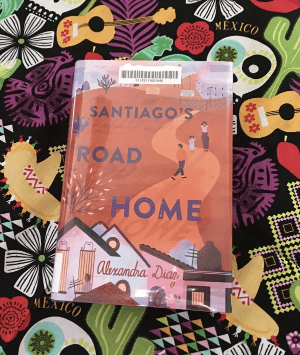
A Middle Grade Devil's Highway. Santiago's Road Home, by Alexandra Diaz. This book is historical fiction, perfect for introducing younger students to the often horrific experiences of desert crossers in the Southwest. The post includes a link to the publisher's free teaching guide. Note: The post also references, for high school juniors or seniors, Luis Alberto Urrea's non-fiction account of a group who attemped to cross the Arizona desert in May, 2001 and died of heat stroke. It is not recommended for middle grade readers and has mature content.
Excellent Immigration Tale in Verse. Land of the Cranes, by Aida Salazar. This post includes a link to the free teaching guide from the publisher, which includes ways to prepare your classrom as a safe space for discussions.
Efrén Divided, by Ernesto Cisneros. This post includes some awesome teaching materials and links that will make this novel a go-to teaching resource in your classroom.
Other Historic Events
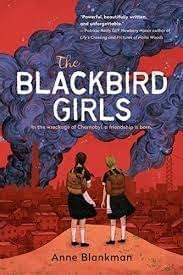
Cold War Nuclear Disaster. The Blackbird Girls, by Anne Blankman. The nuclear disaster at Chernobyl in 1986 is the catalyst for a friendship that spans a lifetime in this wonderful middle grade historical fiction book.
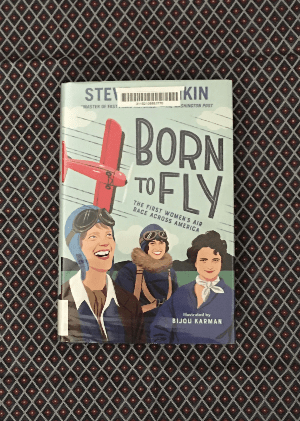
Women's History Month: Born to Fly: The First Women's Air Race Across America, by Steve Sheinkin. This book is a non-fiction account of the eleven women who participated in the 1926 Air Derby and includes the publisher's educational guide .
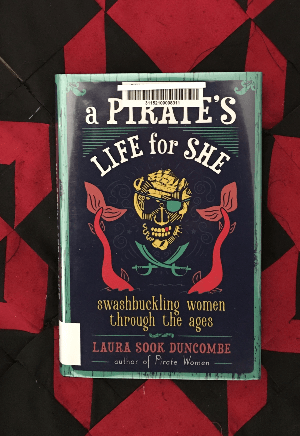
Women's History Month: A Pirate's Life for She: Swashbuckling Women through the Ages, by Laura Sook Duncombe. This is a non-fiction account of the lives of 16 women pirates, each 10-11 pages.
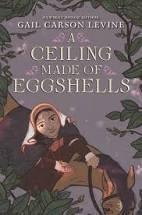
Jews in 1483 Spain. A Ceiling Made of Eggshells, by Gail Carson Levine. This book follows the life of one girl who lives in the judería of Alcalá de Henares in Spain, 1483, and becomes swept up in the political events of the time.
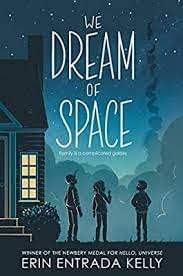
Challenger Explosion Era Fiction: We Dream of Space, by Erin Entrada Kelly. Set pre-Challenger explosion in 1986, this story is told through three points of view of three siblings in a dysfunctional family. The post includes the publisher's educational guide, which touches on point of view, specifically how the illustrations signal changes in point of view of character, how the author creates a distinct "voice" for each character, and asks students to cite textual evidence to support their claims. There are several comprehension questions. Four after reading writing activities include a creative writing prompt and several synthesis and analysis writing prompts.

Back-to-School: A Germy Assassination. Ambushed!: The Assassination Plot Against President Garfield (Medical Fiascoes), by Gail Jarrow. Non-fiction, awesome teaching resource about Garfield's horrific medical treatment after being shot in a train station.

Back to School: The Power of Language. Words on Fire, by Jennifer Nielsen. Historical fiction based on turn-of-the-century Russia's attemps to outlaw the Lithuanian language, wipe it out, and replace its cultural heritage under a larger Russian cultural umbrella.
9-11 and War on Terror
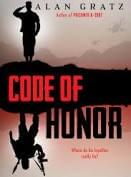
Post 9-11 War on Terror Thriller. Code of Honor, by Alan Gratz. Excellent historical fiction that captures the milieu of post 9-11, War on Terror America, through the eyes of 17-year-old part-Iranian Kamran Smith, whose older brother has been captured by terrorists.

WWII Holocaust Survivor Story. Broken Strings, by Eric Walters and Kathy Kacer. This historical fiction book, set in middle school the year after the Twin Towers attack on 9-11, is a complex, multi-layered read that delves expertly into WWII and post 9-11 time periods with inter-generational characters, ranging from the 7th grade main character to her Zayde, grandfather. The publisher offers a free six-page educator's guide.
Earth Day & Climate Change

Earth Day: All Aboard Animal Habitat Express. The Silver Arrow, by Lev Grossman. This post recommends using this book for the engaging way it tackles animal habitat destruction and for examining the vehicle -- literally a coal burning train -- used as the metaphor to do so. The post provides links to a free Book Club Guide, with 10 comprehension questions, and a Teaching Notes Guide featuring four excerpts from the book with comprehension questions, a graphic organizer for human impacts on the environment and a project planning an animal habitat rescue train ride.
For Earth Day: POV and Natural Resources. The Lorax, by Dr. Seuss. This post recommends using The Lorax as an introduction to the concept of limited natural resources and offers a 25-question worksheet that touches on English Language Arts POV standards and Social Studies standards for natural resources.
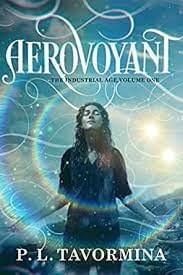
Aerovoyant, by P.L. Tavormina. I review this climate change science fiction book on Goodreads, and recommend it for advanced 8th grade to high school level readers. It tackles both the ideas of individual agency in the face of global (albeit a different globe altogether) climate change, and the science behind climate change, in an engaging story with light romance. Teachers please note: it's offered as an ebook only, and doesn't have a free, standards based teaching guide or discussion guide to go with it, so this would be for independent reading.







